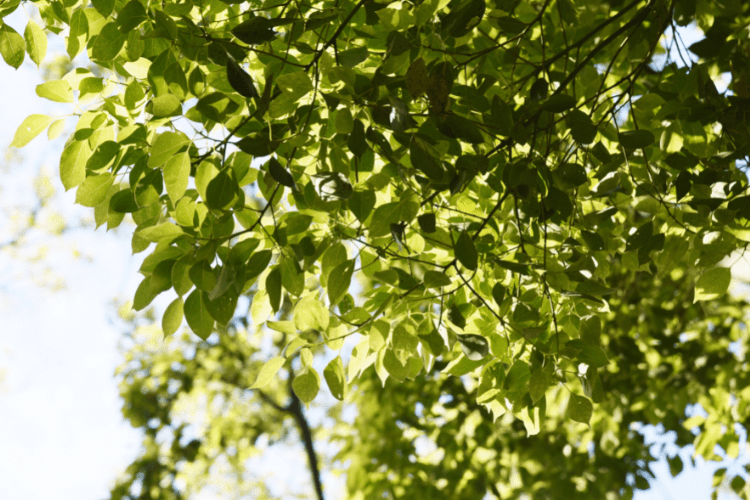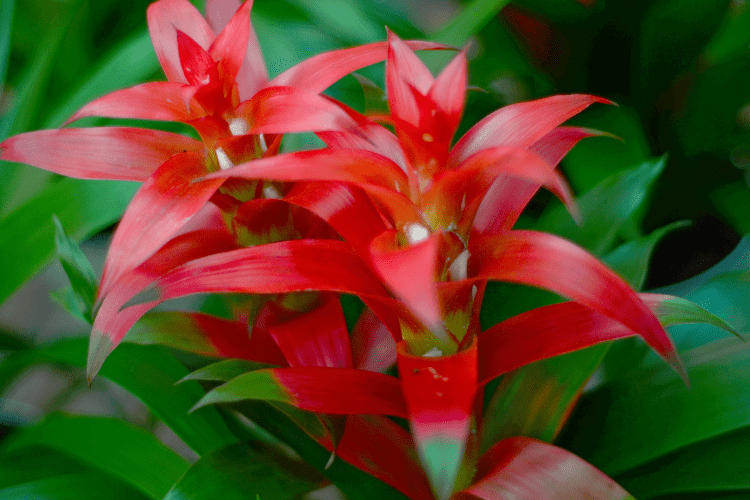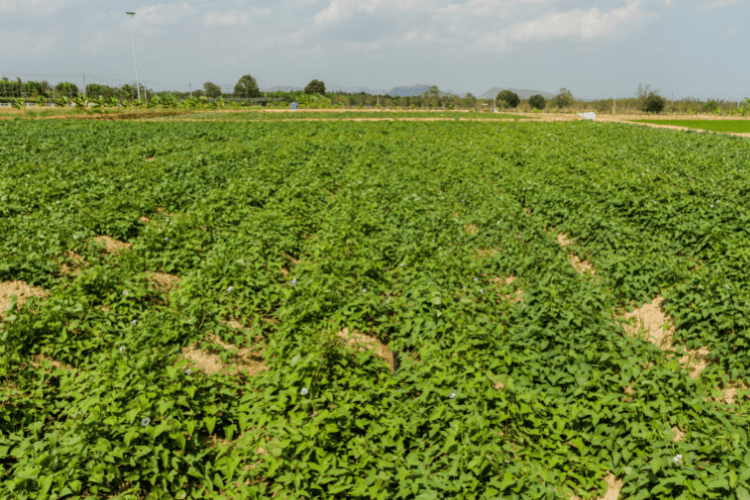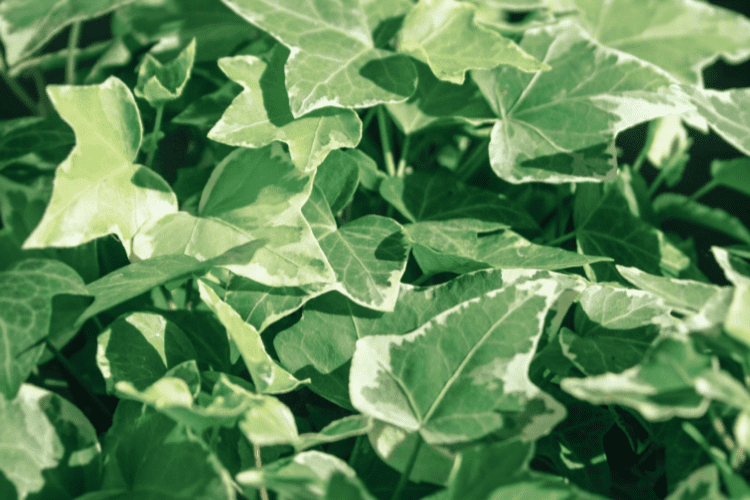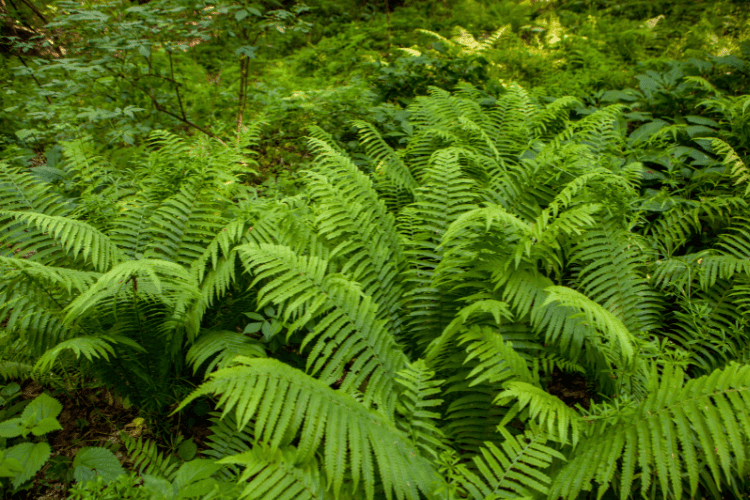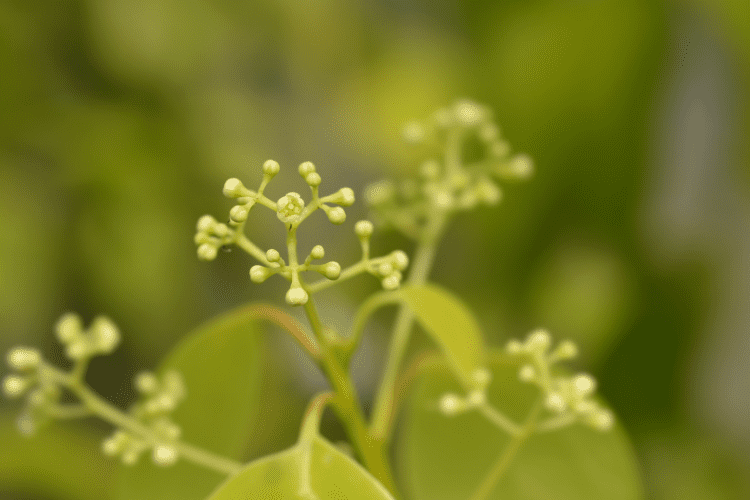- Cassia Tree (Cassia fistula): A Tropical Tree For Your Garden - January 27, 2022
- Camphor Tree (Cinnamomum Camphora) Info - November 18, 2021
- Japanese Lilac Tree: Why Is This Tree A Must Have For Your Garden? - November 7, 2021
Camphor trees mean a lot to me; my obsession with trees started with this one. I grew up in Central Florida, where we shared a sprawling Camphor tree with our next-door neighbor.
It is the only big tree we had in our yard because my grandfather disliked large trees. According to him, our camphor tree damaged the underground drainage system. It ruined his beautiful St. Augustine grass lawn with thousands of fruits and seedlings.
Our giant and sprawling camphor tree provided enough shade for both lawns with its imposing and dominant presence. It even stretched over both roofs. But as a kid, what I enjoyed the most was climbing its thick, sturdy, and low-hanging branches. I spent much time climbing our camphor and resting under it during the brutally hot and humid Florida summers.
Despite the feelings of nostalgia that this tree gives me, as you will read further down, this tree is highly invasive and creates lots of problems for homeowners. As such, I cannot responsibly recommend that you buy one or attempt to grow one from seed.
Nevertheless, this article is for you if you need help identifying, maintaining, or controlling one you already have.
How to Identify Camphor Tree
Did you know that camphor trees belong to the same genus as the cinnamon, Cinnamomum cassia, you use in your kitchen? Yup, they both belong to the genus Cinnamomum.
The Camphor tree, Cinnamomum camphora, is native to subtropical East Asia (China, Japan, South Korea, Vietnam, India). Where I currently live in south China, the camphor is an extremely popular street tree. When I first arrived here, I felt so nostalgic remembering that I l grew up under the same tree, literally.
Smell
Perhaps the easiest way to identify camphor is by its strong menthol odor. It is released whenever you crush the leaves or twigs.
Growth Habit
Camphor is a rapidly growing tree, especially when young. It can grow up to 40 to 50 feet tall with a spread of 50 to 70 feet. From my experience with this tree, the spread is extremely impressive. When planted on the street, they are usually pruned to limit the massive spread.
Camphor has an attractive symmetrical, dense, and round crown.
Leaves
Leaves are dark green and shiny on top, and underneath they are smooth and silvery. They are highly fragrant if crushed. Much like the other members of the cinnamon family, the leaves have the following characteristics:
- Arrangement: Alternate
- Leaf type: Simple, as opposed to compound, each leaf is a true leaf, not a leaflet.
- Leaf shape: Ovate, obovate (egg-shaped)
- Leaf length: 2 to 4 inches
- Leave venation: Pinnate (feather-like veins)
Camphor is an evergreen tree. However, our camphor tree in Central Florida had a heavy leaf-shedding period in early spring. However, there was never a period when the tree was bare. Although new leaves come out throughout the year, there is a substantial growth period in the early spring when old leaves drop.
Flowers
You probably shouldn’t grow a Camphor tree just for its flowers. They are not that impressive, at least in my opinion. Flowers are green, white to pale yellow-green. One nice feature of the flowers is that they are fragrant, you may enjoy that. Overall, the flowers are tiny (less than one inch).
Flowers come out in the spring. Though, the concept of spring is not concrete in the sub-tropical and tropical climates where camphor grows. For those in the Northern Hemisphere, you will likely see the flowers between February to early April in these regions.
Fruit (Warning!)
After flowering, camphor quickly bears pea-sized green to black fruits. In my experience, this tree produces many fruits. Mature trees can produce up to 100,000 fruits each year.
There is a significant problem with the fruits – they leave a big mess. They stain the sidewalks, the streets, and your lawn will be covered with them. Another problem – the fruit has highly fertile seeds. In our lawn in Florida, we had dozens of little camphor trees during the summer months; this is a gardener who hates weeding worst nightmare.
Trunk and Branches
The branches droop and are very showy. The bark is brown to gray, and as it ages, it becomes more furrowed and rigid.
Where Does Camphor Tree Grow
For the North American gardener, there are only a few places on this continent that this tree will strive or survive winter. It is only hardy from USDA zones 9 through 11. To precisely figure out which zone you live in, click here.
I think this tree is better suited for Florida and Southern Texas. Simply because it is native to warm and very humid areas, thus striving in similar climates. The climate conditions in these places are very similar to their native region, which allows easier invasiveness.
Uses of Camphor Tree
Ornamental Use
You are likely to spot camphor as a screen, shade tree, or street tree. It is an excellent urban tree as it is tolerant of pollutants. For this reason, it is a popular street tree here in urban Southern China, where pollution can sometimes be a problem.
It is also a great shade tree for parks or large landscapes.
Warning: This tree can cause tremendous headaches to any homeowner. Here are a few:
- They produce messy fruits that will stain your sidewalk or any cars parked underneath it.
- You will have camphor seedlings all over your yard once the fruits drop. Also, camphor fruit-loving birds do a great job in spreading seeds. The University of Florida Extension does not recommend planting this tree because it is highly invasive.
- Your camphor’s root system will crack concrete pavements and damage drainage systems.
- The sprawling branches often fall and cause property damage during storms.
Medicinal Use
Distilling the bark and wood of the camphor tree produces valuable essential oil.
You can apply camphor oil to the skin to relieve pain and itching. You can also use it on your chest to help you breathe better and reduce the urge to cough. Scientifically, camphor oil can alleviate pain and itching because it stimulates nerve endings that relieve these symptoms.
How to Grow Camphor Tree From Seed
I do not know of a tree that is easier to grow from seed. It does not ask permission or requires any assistance to grow. After the fruits ripen in the spring to early summer, they will fall. In a wet and warm environment, they are sure to germinate and strive!
Please do not attempt to plant this tree from seed; it is highly invasive.
Camphor Tree Growing Conditions
Soil Preferences
Camphor trees can tolerate the following types of soil:
- Clay, sandy, or loam soils are all fine
- Prefers acidic or slightly alkaline soils (4.3 to 8.0 pH is fine)
- Well-drained soil yet moist, it won’t tolerate soils that retain moisture
Camphor Tree Water Requirements
For camphor to strive, the soil must be consistently moist. This need is not a problem in most subtropical to tropical climates with a long rainy season where this tree grows.
But in case the dry season lasts a little too long or is severe, this can be a problem for young trees. Give young trees about 15 to 20 gallons of water each week for the first two years. Once established, you only have to water it regularly when there is a drought. Otherwise, regular rainfall should be sufficient.
Camphor Tree Sun Requirements
Camphor trees are not too fussy about sunlight. They will do fine in full sun, partial sun, or partial shade.
But, if you want it to reach its full potential height and span, give it full sun.
Best Camphor Tree Fertilizer
Fertilizing is usually not necessary unless the tree shows signs of deficiency. The best way to know this is to do a soil test. If the soil has any deficiency, supplement with fertilizer. Also, if needed, apply a slow-release organic tree fertilizer in the spring according to the product’s ingredients. But it is improbable that you will ever need to fertilize this robust tree.
Best Camphor Tree Companion Plantings
Before getting into good companion plants, let’s consider the visual characteristics of this tree. It has a wide horizontal spread, large roots, and provides dense shade. It will compete for root space and nutrients with any other tree or plant you choose to grow nearby your camphor tree.
It is better to plant some groundcovers that are tolerant of shade. Here are a few I recommend:
Bromeliads (Bromeliaceae)
- They add a tropical feel to the landscape, offering various foliage from green to orange with different patterns.
- Tolerant of shade.
- Moisture-loving, which makes it perfect for areas with high summer rainfall, such as Florida.
- Hardy USDA zones 10 to 11.
- Plant them in mass as a groundcover under your camphor tree.
Ornamental Sweet Potato Vine (Ipomoea Batatas)
- It offers lovely green and purplish foliage, easily and quickly growing up to 10 feet.
- Hardy in USDA zones 8 to 11 will die back with frost, but tubers will sprout new vines in spring.
- Though they prefer full sun, they will do fine in the shade.
- You can train it to grab the thick camphor tree branches or keep it on the ground.
Algerian Ivy (Hedera Algeriensis or Hedera Canariensis)
- Algerian Ivy has bold leaves with a dark green mat of foliage.
- Less aggressive and invasive of the common English ivy.
- Hardy in USDA zones 7 to 11.
- An evergreen vine that will have no problem hugging your camphor tree branches.
- Strives in the shade.
- Less aggressive and invasive of the common English ivy.
Swamp Fern (Blechnum Serrulatum)
- Excellent for moist and shaded locations.
- Provides shiny foliage with reddish new growth.
- Can grow up to 4 feet in height.
- Provides a tropical rainforest look when planted under your Camphor tree.
Camphor Tree Diseases and Common Problems
Camphor trees are subject to root rot when planted in poorly drained soils. Root rot could be a problem in areas with clay or other heavy soils.
Scales and mites sometimes affect camphor trees. You can use a tree pesticide to fix this problem. Check with your local garden center or extension office for advice on the best product for your area.
Camphor Tree Treatments and Maintenance
When your camphor is young, you will need to prune it regularly to give it a more compact shape—also, pruning when young will help make the canopy more manageable. If you don’t, the tree will develop open, wide-spreading branches that droop significantly.
Some tips on pruning your camphor:
- Cut back branches to where they originate. Make sharp, clean cuts next to the stems. To help the tree develop a single and robust main trunk, prune branches growing near the base. Prune branches growing on the trunk to about 18 to 30 inches apart.
- Remove damaged or diseased branches from older camphor trees at any time during the year. If you notice that your camphor is outgrowing a small space, go ahead and prune it back during the winter to control this.
How to Remove Camphor Tree
As mentioned numerous times in this article, I do not recommend planting this tree. Here are some methods provided by the University of Florida on how to control the invasion risk. Here are some ways to remove the one and to control a possible infestation.
Preventing Invasion
The fruits are the primary driver for spread, so it is best to control trees before they mature. Large mature trees are primarily responsible for this spread, with up to 100,000 fruits each year.
If your tree is already mature, contact a tree professional to cut it down.
Chemical Measures
To kill a camphor tree from the stump, you can apply certain chemicals such as dicamba, imazapyr, picloram, glyphosphate, and triclopyr. Be sure to follow the manufacturer’s instructions. If you don’t have a lot of experience handling tree chemicals, contact a professional – play it safe.
Mechanical Measures
This section is for removing seedlings and young trees.
- Mowing – Frequent mowing will help to kill the majority of camphor tree seedlings in your lawn. Mowing is what my grandfather would do each summer to control the growth.
- Burning – This method helps control smaller camphor trees, but larger trees are likely to resprout.
- Weeding – You can manually remove seedlings and young trees, but this will likely be labor-intensive and annoying for you.
Where to Buy Camphor Tree Seeds Online
AVOID buying seeds for Camphor trees online. As I mentioned numerous times, I cannot recommend that you seek to plant this tree due to its invasive nature.
Where to Buy Camphor Tree Saplings Online
Once again, AVOID buying Camphor tree samplings online. I cannot recommend that you plant this tree, especially if you live in Florida. The University of Florida Extension highly discourages new plantings.
FAQs
Answer: Medicinally, camphor oil is used to relieve pain and itching when applied to the skin. But do not inject, as it is toxic in large doses. Ornamentally, it is an attractive shade tree, especially in urban areas, as it is pollution resistant.
Answer: The major problem with camphor trees is that they reproduce aggressively. They produce many highly abundant fruits that have become quite invasive in Florida.
Answer: Camphor tree is native to sub-tropical Eastern Asia. In the United States, you can find it in the southernmost states and California.
Answer: Camphor trees have shiny black fruits that birds love. During the spring, when the fruits are mature, you will find many birds picking them on your tree at any given moment. Birds’ love for these fruits contributes significantly to the seeds’ spread, subsequent status, and an invasive tree.
Answer: These are extremely fast growers, especially in the first few years. But more mature trees slow down to about 24 inches of growth per year. I have seen seedlings grow up to four feet tall during the summer.
Answer: Camphor trees can get up to 70 feet in height, but 40 to 50 feet is more likely. Though, if not pruned, the camphor tree can quickly spread to 70 feet wide at maturity.
Answer: Camphor trees develop a massive root system. The one I grew up with used to block drains and crack the concrete pavement.
Final Thoughts
I love this tree, it has a beautiful smell, branches, and canopy, but I cannot recommend that you plant one. I now understand my grandfather didn’t like this tree – it creates lots of extra yard work:
- Sprawling limbs that fall easily that damage property.
- You will have lots of leaves to rake in the early spring.
- Many little fruits drop, causing an infestation of little camphor trees all over the yard. For this reason, it is considered an invasive tree in much of Florida.
- Messy dark fruits stain the sidewalks.
But for us kids, we couldn’t have asked for a more fun tree. It wasn’t too tall to climb and had amazing sprawling and thick branches for us to play and swing on.


